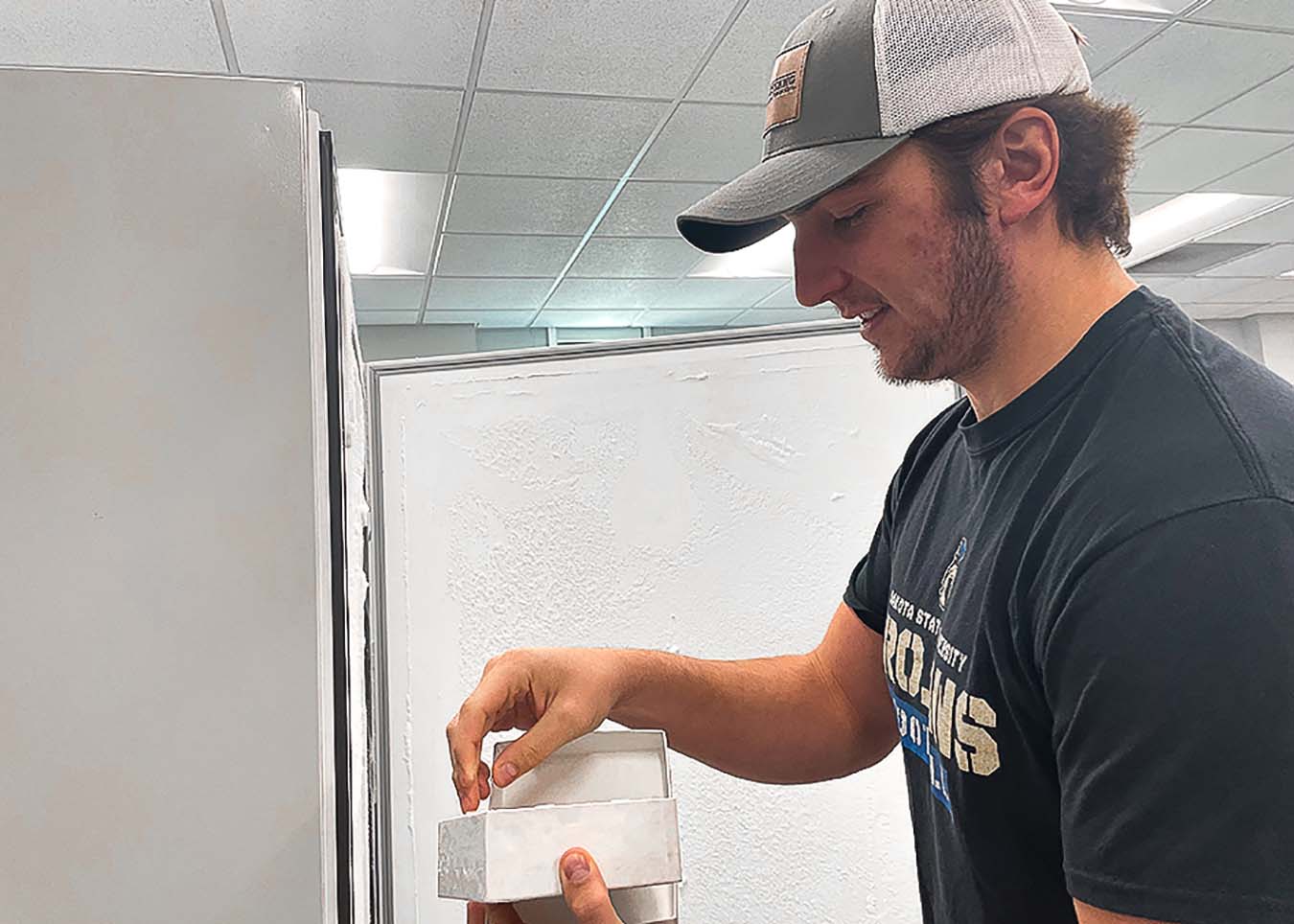Tordsen evaluating biological control agents for SRI
January 6, 2022
Conner Tordsen started researching alfalfa in the summer of 2020 with Dr. Andrew Sathoff, and fellow student Jenni Giles.
This led Tordsen to apply for and receive two Student Research Initiative (SRI) grants, one in 2020 and one for 2021. Sathoff, Assistant Professor of Biology, is his mentor for this research.
That first summer of research, which focused on Aphanomyces, or alfalfa root rot, inspired Tordsen to continue studying alfalfa. “I think a big part of continuing on with the research is that we’ve continued to find results that we were looking to find, and how it has positively affected the growers in South Dakota,” he said.
A partnership with Mustang Seeds to research alfalfa root rot enabled Tordsen to share the results with South Dakota growers, who were interested in the topic and would ask questions.
After looking at different fungicides and how they could fight Aphanomyces and some Pythium (also an alfalfa pathogen), Tordsen is now looking at biocontrols. He describes this as “the use of another microbe to see how it can defend the plant against Aphanomyces or Pythium.”
“They’re more environmentally friendly,” Sathoff said, and biocontrols tend to mimic natural soil, he explained. They are also safer to work with in the lab, as working with fungicides requires gloves and diluting them out heavily. Many biocontrol treatments have been investigated for usage in soybeans, but not alfalfa.
Tordsen’s goal is to find out which biocontrols work best and then compare them to the fungicides and how well they defend the alfalfa.

Throughout his years of alfalfa research, Sathoff has watched Tordsen grow as a researcher; he’s become more disciplined, mastered lab skills, and improved his technical writing.
Tordsen will continue to share his research findings through presentations and publications. This research will showcase different treatments growers can use to treat and coat their seed with these biocontrol agents, Sathoff explained. “It will increase yields if these are successful.”
Growing up in a small town in southern Minnesota, Tordsen is familiar with farming communities and feels that despite not being a farmer, he can do his part by sharing his research with growers.
Sharing research is an integral part of the scientific process. “An underrated portion of science is promoting your own research and reaching out to parties and seeing that the knowledge you’ve generated is actually applied,” Sathoff said. “The end goal is not just publication, it’s to change growing practices.”
Tordsen has been able to help share this information as an author of an Aphanomyces Fact Sheet published in collaboration with the South Dakota State University Extension Services.
Upon graduation, he hopes to continue his education at a dental school.
“His research experience will look great on his dental school applications,” Sathoff added.
